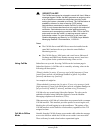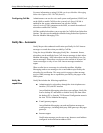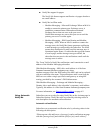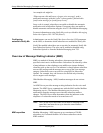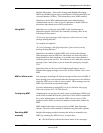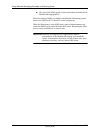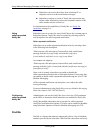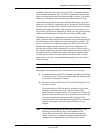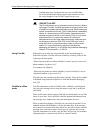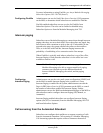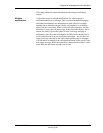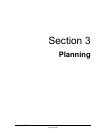
Support for message and call notification
November 2004
Avaya Modular Messaging Concepts and
Planning Guide
9-11
schedules (times for rules) with an associated list of telephone numbers
for forwarding unanswered calls. Find Me is implemented only for calls
that are not answered because the extension rings, but there is no answer,
and not for calls that are not answered because the extension is busy.
When unanswered calls are directed to Modular Messaging, the system
checks to see if Find Me is enabled, and if so, whether the call has arrived
within an active schedule. If the call has arrived within an active schedule,
Modular Messaging asks callers if they want to leave a message or have
the system try to locate the subscriber, in which case, the system prompts
callers to record their name and then plays the 'Please Hold' prompt.
Depending on the type of integration used, callers will hear a tone or
music or silence when on hold. In the meantime, the system dials the first
Find Me number in the telephone list associated with the schedule. This
process is referred to as making an enquiry call. If the call is answered,
Modular Messaging responds with the name of the calling party and
provides the recipient with an opportunity to accept or reject the call. If
the recipient answers the call, the system completes the transfer. If the call
is unanswered, Avaya Modular Messaging calls the next number in the
Find Me list. If it reaches the end of the list and all the calls are either
unanswered or rejected, Avaya Modular Messaging allows the caller to
leave a message.
Note: Find Me is not supported for analog integrations.
Depending on the integration type, Find Me uses one or two ports:
! On systems that use Digital Set Emulation integrations, Find Me
uses only one port. The same port that handles the incoming call
is also used to complete the transfer.
! On systems that use QSIG and H.323-based IP integration, Find
Me uses two ports.
On systems that use QSIG integration, one port is used for the
incoming call and the other port is used to dial the called
subscriber and to attempt transfer. The two ports are used for the
duration of the transfer attempt. If the transfer is unsuccessful, the
second port acquired for the enquiry call is dropped. If the
transfer attempt is successful then the transfer will be completed
and path replacement will ensure that both MAS ports are
dropped.
Note: Certain switch configurations cause path replacement to fail;
both ports on the MAS stay busy for the duration of the
successfully transferred call. To avoid such switch-specific
failure scenarios, it is important to make sure that the switch
configuration is implemented as described in the relevant



